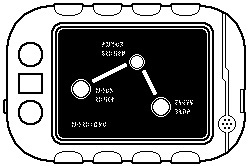Technology level 1
Technology level 1 is the second of the Technology level classifications. The defining characteristics of a society having reached TL–1 are skill specialization, members of the society who have specialized knowledge of materials, law, science, or other fields. This requires that agriculture be refined enough to be able to feed the members of the society not working on food production. It also relies on a society to value the contributions. And an education or training system to pass the knowledge from one generation to the next.
The second characteristic is the use of metals, including mining techniques, refining, and working them into various shapes. This starts with the metals that are easier to find and work, like copper, silver, and gold. It quickly expanded into other metals like bronze and iron. As part of the refinement and forging of these metals requires the use of high-temperature fires, it also drives the development of ceramics, pottery, and glass making.
In terms of classification TL–1 is the Technological Period of Ur-Tech, the initial planetary bound cycle of development. It also occurs within the Technological Epoch known as the Tool Making Epoch.
Theoretical Technologies[edit]
- Physical Science
- Astronomy - Naked eye observations produce a basic understanding of the motion of the planets (and stars) within the system. Allows for the prediction of seasons and the beginnings of crude navigation.
- Engineering by estimate - Ability to perform engineering marvels based upon previous constructions and rule-of-thumb estimates.
- Material Science / Manufacturing
- Metalworking, quarried stone, glass, cement, concrete
- Wheels and Axle - the ability to mount a rotating wheel on an axle for transportation and energy capture.
- Biological Science
- Selective breeding, Crop Irrigation
- Cultural Science
- Settlements, Cities, Irrigation, Canals
- First coins for use as money
Quality of Life Technologies[edit]
- Energy
- Water wheels, Windmills - The ability to harness the motion of natural phenomena for useful work. Connection to the working environment is via a direct mechanical linkage to simple fixed machines.
- Wood and Charcoal - The use of the natural source of fire in a forge or kiln to produce the high temperatures required for metal forging.
- Information
- Abacus, Practical mathematics
- Communications
- Writing, Paper - information can now be stored and transmitted to others over both a long distance and reviewed at another time.
- Medicine / Life sciences
- Basic Diagnosis
- Environment
- Settlements, Cities, Irrigation, Canals
Transportation Technologies[edit]
- Land Transportation
- Domesticated animals - used for transportation as riding beasts
- Wheel - The ability to construct wagons drawn by beasts or people.
- Water
- Shipbuilding - Rowed galley and basic sailing vessels dominate the shorelines of waterways. The building of canals to improve the use of boats between settlements.
Military Technologies[edit]
Tech Level 1 cultures have formalized warfare and conflict, with rank structures, standard tactics, and so on, though these are not usually sophisticated. Normal conflicts involved throwing masses of armed men at each other until one side became demoralized and retreated. Battlefield communications were negligible and allowed only the simplest of changes to a battle plan once the fighting started. Naval combat involves primitive sail or man-powered vessels, using small siege engines, rams, and boarding actions as the means of capturing or destroying enemy vessels. [1]
- Weapons Technology
- Metal weapons - Swords and polearms made of Bronze or Iron
- Metal armor - The natural elements (Leather, wood) give way to metal re-enforced armor, and full metal armor
- Catapults - Simple mechanical arms to throw rocks or other missiles
See also[edit]
Technology levels[edit]
References & Contributors[edit]
- Marc Miller. Worlds and Adventures (Game Designers Workshop, 1977), 7-8, 14-15,17.
- Marc Miller. Scouts (Game Designers Workshop, 1983), 26.
- Marc Miller. Merchant Prince (Game Designers Workshop, 1985), 34,37.
- Herb Petro. "Tech Level Expansion." Imperium Staple 07 (1986): 3.
- Loren Wiseman. "Twisting Tech Levels: A Traveller Variant." Challenge 31 (1987): 27.
- Marc Miller. Referee's Companion (Game Designers Workshop, 1988), 26-34.
- Joe Fugate, J. Andrew Keith, Gary L. Thomas. World Builder's Handbook (Digest Group Publications, 1989), 58,83-86.
- Frank Chadwick, Dave Nilsen. Fire, Fusion, & Steel (Game Designers Workshop, 1994), 6-8,37.
- Greg Porter. Emperor's Arsenal (Imperium Games, 1997), .
- David Burden. Pocket Empires (Imperium Games, 1997), 51-52,108.
- Leighton Piper. "Low Tech." Signal-GK 13 (1997): 30-31.
- Jon F. Zeigler. First In (Steve Jackson Games, 1999), 94-95, 108-117.
- K. David Ladage, "Alternate Technological Paths", JTAS Online (2001)
- K. David Ladage, "Alternate Technologies II: Relativity", JTAS Online (2001)
- Martin Dougherty, Hunter Gordon. The Traveller's Handbook (QuikLink Interactive, 2002), 378.
- Ken Pick, "An Analysis of Tech Levels", Freelance Traveller 012 (2010): 10-12
- Marc Miller. T5 Core Rules (Far Future Enterprises, 2013), 502-507.
- Marc Miller, Robert Eaglestone, Don McKinney. Starships (Far Future Enterprises, 2019), 223-237.
- Marc Miller, Robert Eaglestone, Don McKinney. Worlds and Adventures (Far Future Enterprises, 2019), 19.
- Geir Lanesskog. World Builder's Handbook (Mongoose Publishing, 2023), .
- ↑ Greg Porter. Emperor's Arsenal (Imperium Games, 1997), 14.
